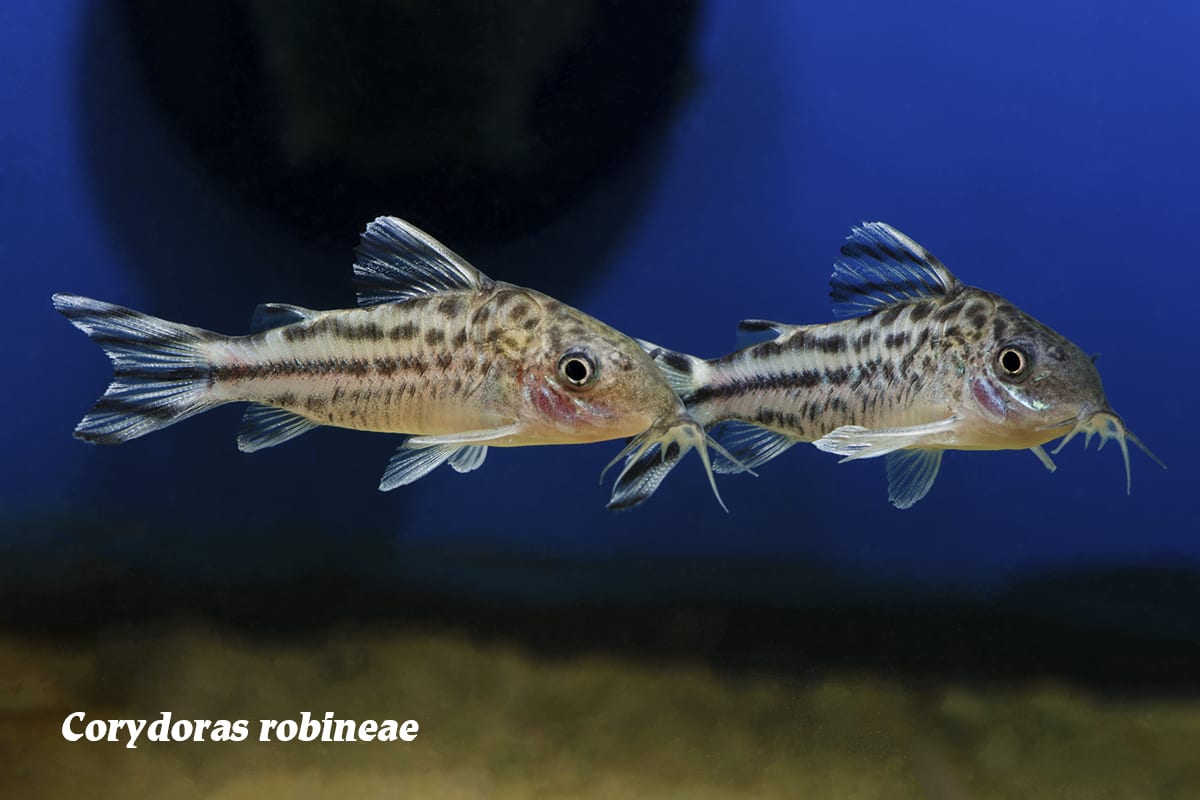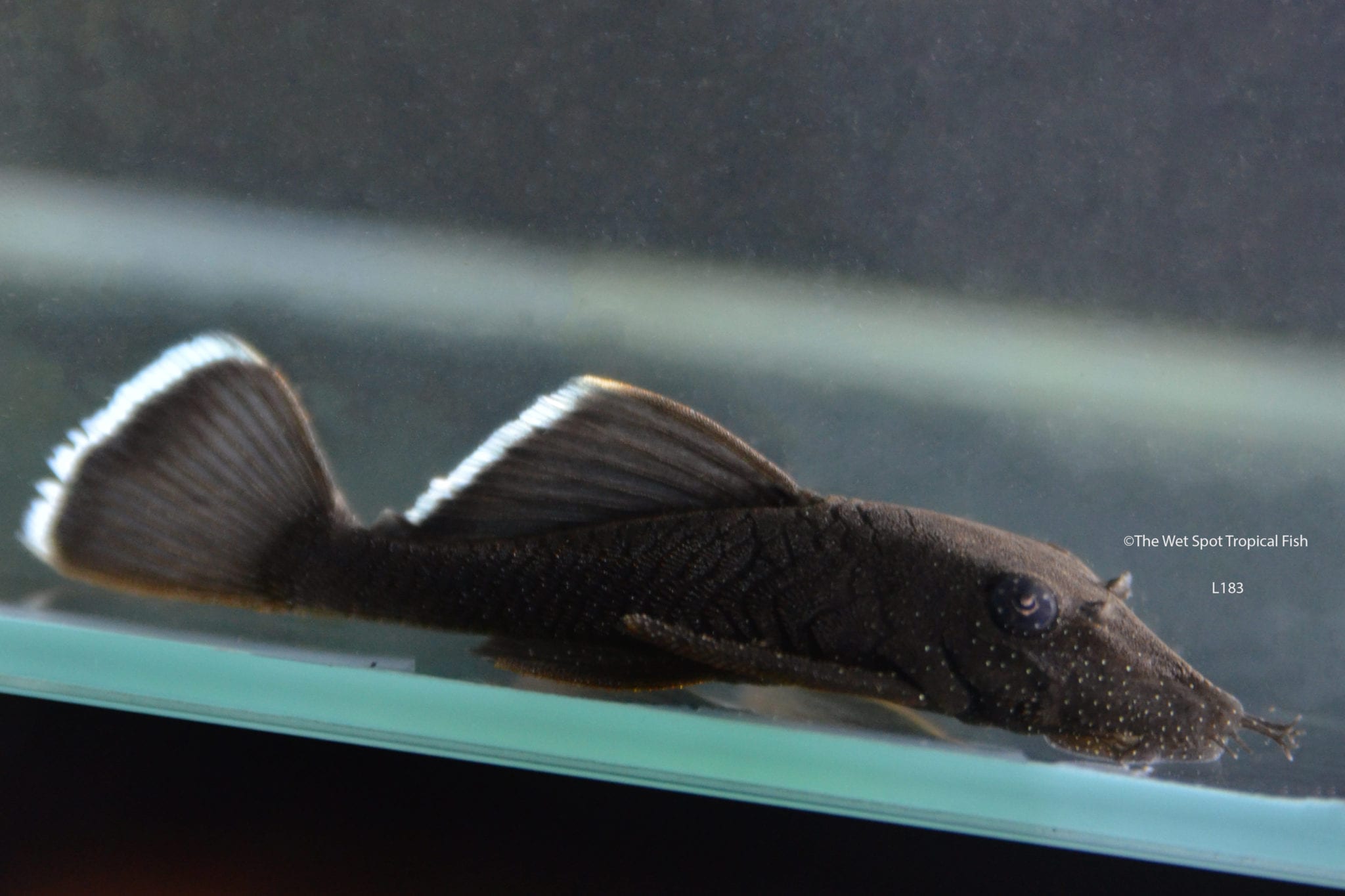Black-and-White Thinking
Black-and-White Thinking
The human brain is a beautiful filter. For newborns, the world is so confusing and overstimulating, neuronal connections must be “pruned back” in order for us to make sense of things, and function as we age. This necessity, however, has ramifications. It is an incredibly human trait to see things in “black and white”, but this tendency isn’t very flexible, and can lead to some profoundly human gafs. In an attempt to avoid these pitfalls, we use-you guessed it- fish as a reminder that every situation has a unique context that warrants a closer look. This week, we’ll highlight species that may look black and white from a distance but in fact have their own unique and beautifully nuanced patterns. A few of our favorites that fit this bill include Nannostomus espei, Corydoras robineae, and Ancistrus dolichopterus.
Scientific NameNannostomus espei
Common NameBarred Pencilfish
Temperature / pH72 to 80°F / 4.0 to 6.5 pH
Native LocationGuyana
Preferred DietSmall invertebrates
Still turned on to pencilfish from last week? N. espei is a boldly patterned member of this group. Reaching just over an inch in length, they exhibit light background coloration with dark, vertical black banding and black fins. These “Barred Pencilfish” are found inhabiting sluggish backwater tributaries in Guyana, and do best in aquaria with dark substrate, dense vegetation including tall and floating plants to break their line of sight, driftwood branches, and dried leaf litter. Though they are extremely peaceful, they are not ideal for most community setups due to their skittish nature. Ideal tank mates include small, slow-moving characids, apistos, and small loricariids. In the wild, they mostly consume miniscule invertebrates and zooplankton. In captivity their diets should consist of small live and frozen fare and small, high-quality dried products. Tank waters are best maintained with temperatures between 72 and 80°F, pH of 4.0 to 6.5, and hardness around 18 to 90 ppm.
Scientific NameCorydoras robineae
Common NameBannertail Cory
Temperature / pH70 to 79°F / 6.5 to 7.5 pH
Native LocationRio Negro, Brazil
Preferred DietSinking foods
A member of the beloved Corydoras cohort, C. robineae is a preciously patterned choice. Known as “Bannertail Cories”, they reach 3 inches in length, and their light-colored bodies are dotted and banded in black, with a striped banner of a caudal fin. Found in main river channels of the Rio Negro in Brazil, this cory requires sandy or smooth gravel substrate, variably-sized water-worn rocks, driftwood, and floating vegetation for cover. Peaceful and gregarious, cories should be kept in groups of 6 or more, and may be housed alongside anything that isn’t too large or aggressive. Primarily a micropredator, they should be fed regular meals of small live and frozen invertebrates, and sinking dried foods. These cories do best in waters with temperatures of 70 to 79°F, pH around 6.5 to 7.5, and hardness between 90 and 215 ppm.
Scientific NameAncistrus dolichopterus
Common NameStarlight Ancistrus
Temperature / pH78 to 86°F / 5.0 to 7.0pH
Native LocationRio Negro, Brazil
Preferred DietOmnivorous/sinking foods
What is the night sky but a sea of black and white? Awe-inspiring and networks of patterns, of course, but also the closest analog to the pattern exhibited by A. dolichopterus. Commonly known as L183, or the “Starlight Ancistrus”, this pleco reaches 8 inches in length and exhibits a dark blue/black body with white edged fins and star-like spots covering their bony plates. This magnificent specimen hails from Rio Negro and the Amazonas of Brazil and Guyana. Preferring flowing streams and tributaries with acidic blackwater, they do best in aquaria with sandy substrate, tangles of driftwood branches and roots, dim lighting, and dried leaf litter. Relatively peaceful, but territorial with other plecos, they can be kept with just about any fish that thrive in the same conditions. Omnivorous foragers by nature, they should be fed varied diets including dried, sinking pellets, live and frozen invertebrates, fresh fruit, and fresh vegetables. Tank waters should be maintained with temperatures around 78 to 86°F, pH between 5.0 and 7.0, and hardness of 18 to 179 ppm.
It’s certainly easy to approach the world when each perceived stimulus or situation fits neatly into a box. Unfortunately, though, there’s almost always something we’re missing. Don’t miss out on all the idiosyncratic beauty present around us, and spare a few moments for a closer look.


